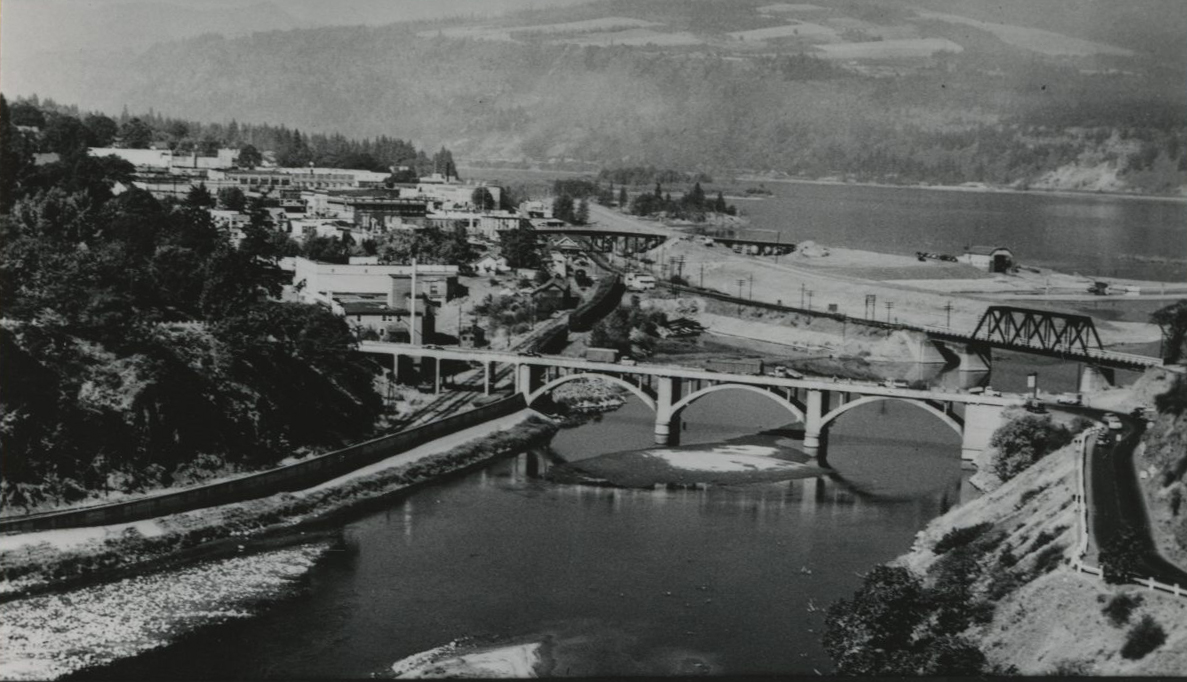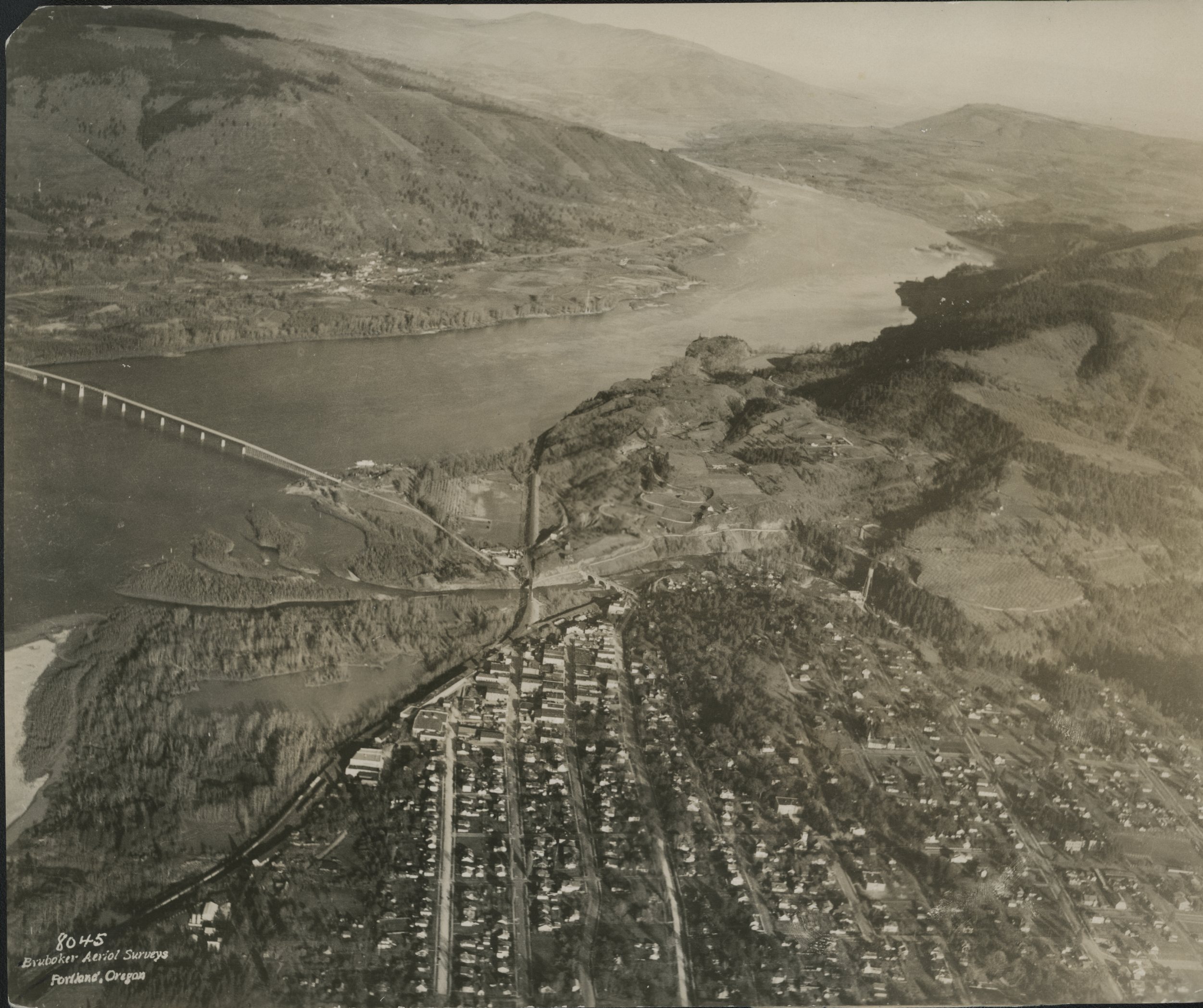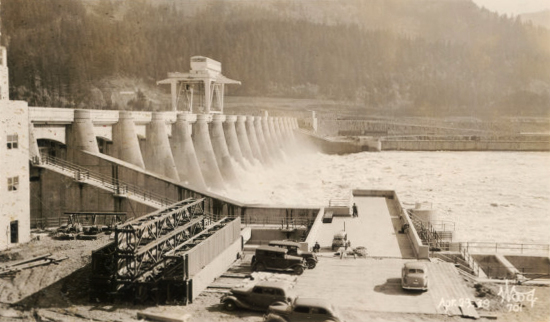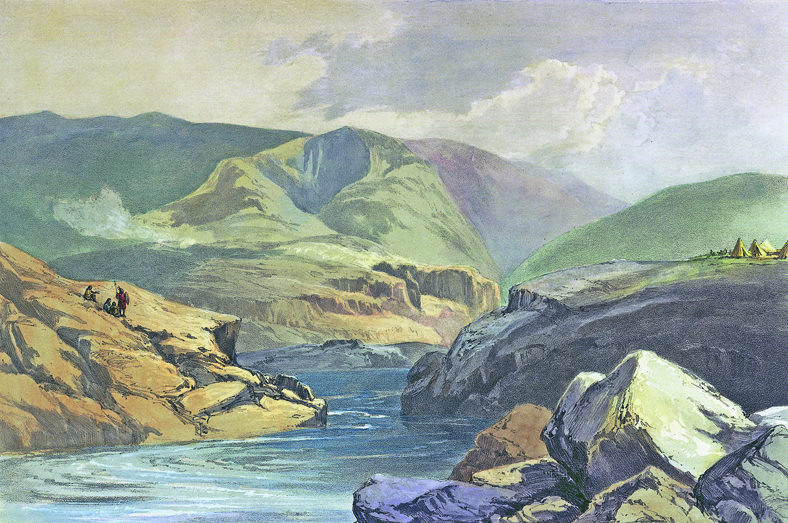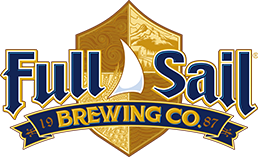Since its incorporation in July 1933, the Port of Hood River gradually has transformed its waterfront holdings from natural resource operations (lumber and fruit) to clearly demarcated zones for business and tourism, giving Hood River a more welcoming and public aspect.
The five-member elected port commission held its inaugural meeting on August 12, 1933. Construction on the Bonneville Dam project had spurred legislative interest to “develop industrial lands in the Columbia River Basin,” and a key element was the formation of port districts. Completion of the Bonneville Dam in 1937 and the resulting Bonneville Pool encouraged development, but the Port of Hood River was not to take advantage of this until the 1950s.
In 1950, the port’s purchase of the Hood River Toll Bridge from the Oregon-Washington Bridge Company provided working capital to acquire land and fill submerged properties. To further its efforts, the Port of Hood River joined with the Hood River Chamber of Commerce to hire George D. Bartsch to manage the Hood River Chamber-Port Authority.
Port-filled land changed the Hood River waterfront, which had housed the operations facility and log pond for the Oregon Lumber Company. By the 1960s, with redevelopment of filled lands, Hood River Village (motel and tourism services) opened on the eastern half of port property, and an industrial park was under development on the western half. According to the “History of the Development of the Port of Hood River,” it was “the first planned industrial area and the only one on the Bonneville Pool” with access to “railroad . . . interstate highway . . . and barge transportation.”
Further expansion and business diversification occurred when Hood River County deeded the Hood River Airport to the Port of Hood River in 1975. Three years later, the port purchased 29 acres near the neighboring community of Odell for the future John Weber Business Park, named for Port Commissioner and Odell resident John Weber.
The Port of Hood River purchased the Diamond Fruit Growers’ former downtown cannery complex in 1984 and began plans for extensive redevelopment of the twenty-one-acre site and its properties. One of the properties, the Waucoma Center, purchased by Sprint in 1998, serves as office space for the communications company Century Link (formerly Embarq) and the U.S. Forest Service. The Columbia Building, a cannery facility, houses operations for the Full Sail Brewing Company. The Diamond Fruit property, known as the Big 7 Building, contains several tenants, including local Internet service provider Gorge Networks.
The port's waterfront property accommodates a number of businesses, a museum, port offices, and a marina and recreation area, which serves mariners and other river users, notably wind surfers and kite boarders. The eastern part of the waterfront still serves travelers and locals, with new conference facilities at the Hood River Inn. Port holdings also include the Wasco Business Park in West Hood River, in development since 2003.
-
![]()
Looking west at Hood River and construction on new I 84 freeway, 1952.
Courtesy Oregon Hist. Soc. Research Lib., 000972
-
![]()
Aerial view of Hood River, 1930.
Courtesy Oregon Hist. Soc. Research Lib., OrHi85748
Related Entries
-
![Bonneville Dam]()
Bonneville Dam
The U.S. Army Corps of Engineers built and operated Bonneville Lock and…
-
![Columbia River]()
Columbia River
The River For more than ten millennia, the Columbia River has been the…
-
![Full Sail Brewing Company]()
Full Sail Brewing Company
Founded in 1987 in Hood River, the Full Sail Brewing Company is one of …
Map This on the Oregon History WayFinder
The Oregon History Wayfinder is an interactive map that identifies significant places, people, and events in Oregon history.
Further Reading
"Chamber of Commerce, Port Hire Manager." Hood River News, June 7, 1956.

